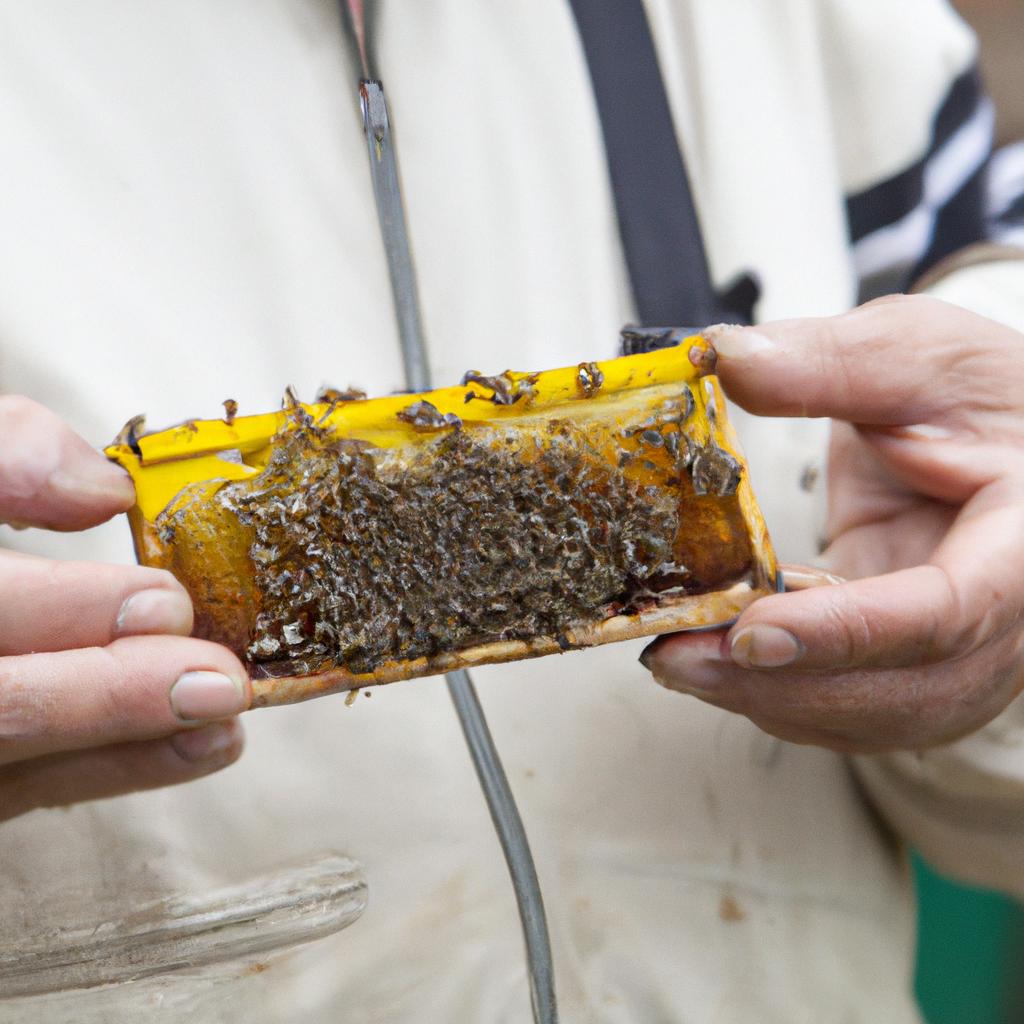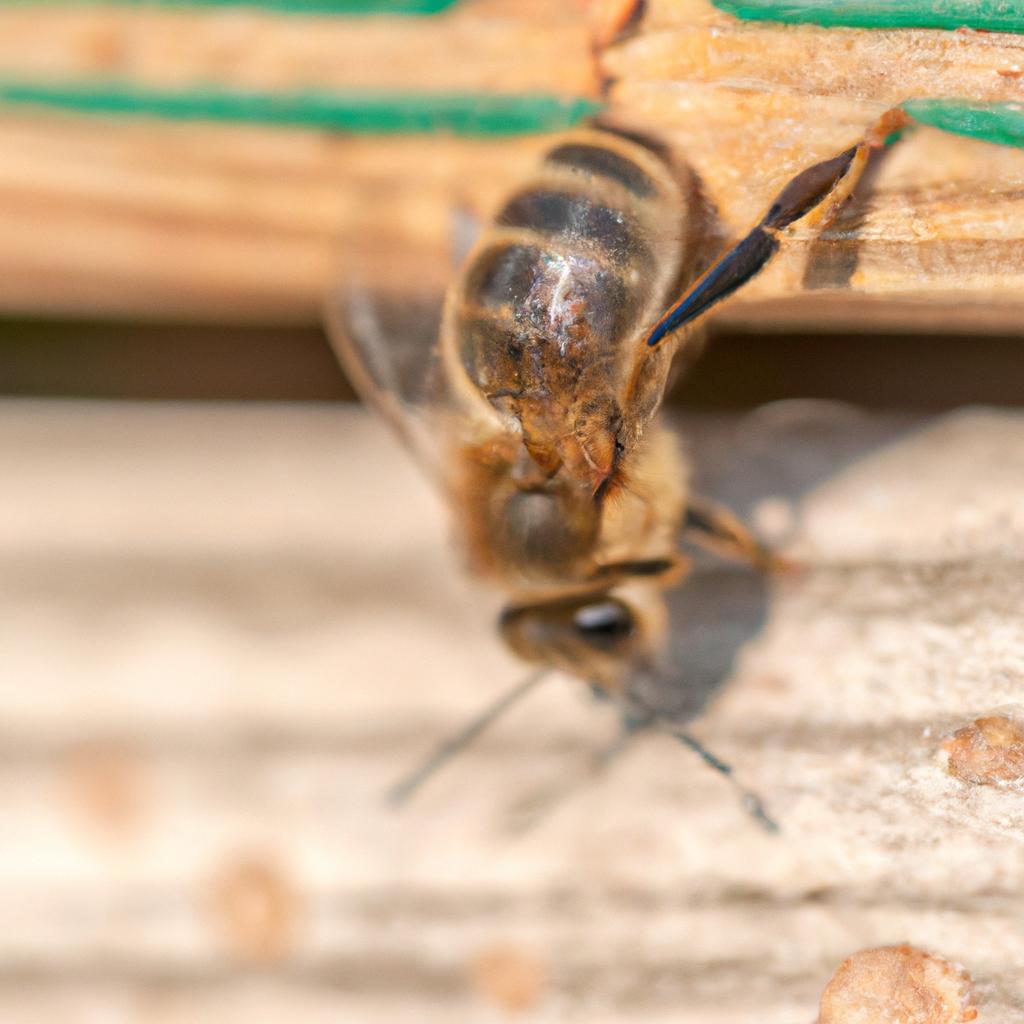As a beekeeper, one of the most significant challenges you face is managing the varroa mite population in your hives. These tiny parasites can cause significant damage to your bees, weakening them and ultimately leading to colony collapse. Fortunately, there are different methods of controlling varroa mites, including the use of Apivar strips.
Apivar, also known as Amitraz, is a pesticide commonly used in beekeeping to control and eliminate varroa mites. The active ingredient in Apivar strips penetrates the mite’s exoskeleton, causing paralysis and death. However, to get the most out of Apivar, it’s essential to know how long to leave the strips in the hive. In this article, we’ll explore the recommended duration for Apivar treatment and other important factors to consider.
How Apivar Works

Before we dive into the duration of Apivar treatment, it’s important to understand how Apivar works. Apivar strips contain the active ingredient Amitraz, which is a neurotoxin that targets the nervous system of varroa mites. When the mites come into contact with Apivar, the active ingredient penetrates their exoskeleton and causes paralysis, leading to death.
One of the primary benefits of Apivar is that it’s effective against varroa mites at all stages of their life cycle, including the hard-to-kill reproductive females. Additionally, Apivar is easy to use and doesn’t leave residues in honey, making it safe for consumption. However, it’s essential to use Apivar correctly to ensure maximum effectiveness.
Instructions for Using Apivar Strips

To get the most out of Apivar treatment, it’s essential to follow the instructions carefully. Here’s a step-by-step guide on how to use Apivar strips:
How to Prepare for Apivar Treatment
- Ensure that the hive is free of honey supers.
- Remove any debris from the hive, including dead bees and wax cappings.
- Place the Apivar strips in the hive, according to the manufacturer’s instructions.
- Close the hive and wait for the recommended treatment period.
How to Apply Apivar Strips
- Open the hive and remove the honey supers if they’re present.
- Place the Apivar strips on the top of the frames, spacing them evenly throughout the hive.
- Close the hive and wait for the recommended treatment period.
Safety Precautions to Consider
While Apivar is generally safe for bees and humans, it’s important to take some safety precautions when using it. Here are some safety tips to consider:
- Wear protective clothing, including gloves and a mask.
- Avoid direct contact with the Apivar strips.
- Follow the manufacturer’s instructions carefully.
- Keep Apivar out of reach of children and pets.
How Long to Leave Apivar Strips In
The recommended treatment duration for Apivar strips is generally six weeks. However, several factors may affect the treatment period. Here are some factors to consider:
Recommended Treatment Duration
The recommended treatment duration for Apivar strips is six weeks, which is usually enough time to kill the varroa mites in the hive. After six weeks, it’s time to remove the Apivar strips.
Factors That May Affect Treatment Period
Several factors may affect the treatment period, including the severity of the varroa mite infestation, the weather conditions, and the health of the honeybee colony. If the infestation is severe, it may be necessary to extend the treatment period.
Signs That It’s Time to Remove Apivar Strips
After the recommended six-week treatment period, it’s time to remove the Apivar strips from the hive. However, before removing them, it’s essential to check if the varroa mite infestation has been effectively controlled. Here are some signs that it’s time to remove Apivar strips:
- The varroa mite population has decreased significantly.
- There are no signs of varroa mite infestation, such as deformed wings or crawling bees.
- The honeybee colony is healthy, with no signs of stress or weakness.
By following the instructions for using Apivar strips and knowing how long to leave them in the hive, you can effectively control varroa mite infestations and keep your honeybee colony healthy.
Monitoring Varroa Mite Infestations
While Apivar is an effective treatment for varroa mites, it’s essential to monitor the mite population regularly. Monitoring allows you to assess the effectiveness of the treatment and determine when to repeat it. The importance of monitoring cannot be overstated, as failing to do so can lead to a resurgence of varroa mites and weakened bee colonies.
There are different methods of monitoring varroa mites, including sugar shake, alcohol wash, and sticky board. Sugar shake involves shaking a sample of bees in a container with powdered sugar and then counting the number of mites that fall off the bees. Alcohol wash involves killing a sample of bees and then washing them in alcohol to dislodge any mites. Finally, sticky board involves placing a sticky board at the bottom of the hive to trap mites.
To monitor the effectiveness of Apivar treatment, you can use any of the above methods before and after treatment. If the mite population has decreased significantly, it’s a sign that the treatment is working. However, if the mite population remains high, you may need to repeat the treatment or try a different method of control.
Conclusion
In conclusion, Apivar is an effective treatment for varroa mites in bee colonies. However, to get the most out of Apivar, it’s essential to follow the recommended instructions, including how long to leave the strips in the hive. The recommended treatment period is six weeks, but other factors such as weather conditions, mite population, and hive strength can affect the duration. It’s also crucial to monitor the mite population regularly to assess the effectiveness of the treatment and determine when to repeat it.
As a beekeeper, the health of your bees is of utmost importance, and Apivar can play a significant role in maintaining healthy colonies. However, it’s crucial to follow the recommended instructions, monitor the mite population, and take appropriate action when necessary. By doing so, you can ensure that your bees thrive and continue to produce honey for years to come. Remember, for all your beekeeping needs, visit BeeKeepinglove.com, your one-stop-shop for all things beekeeping.
